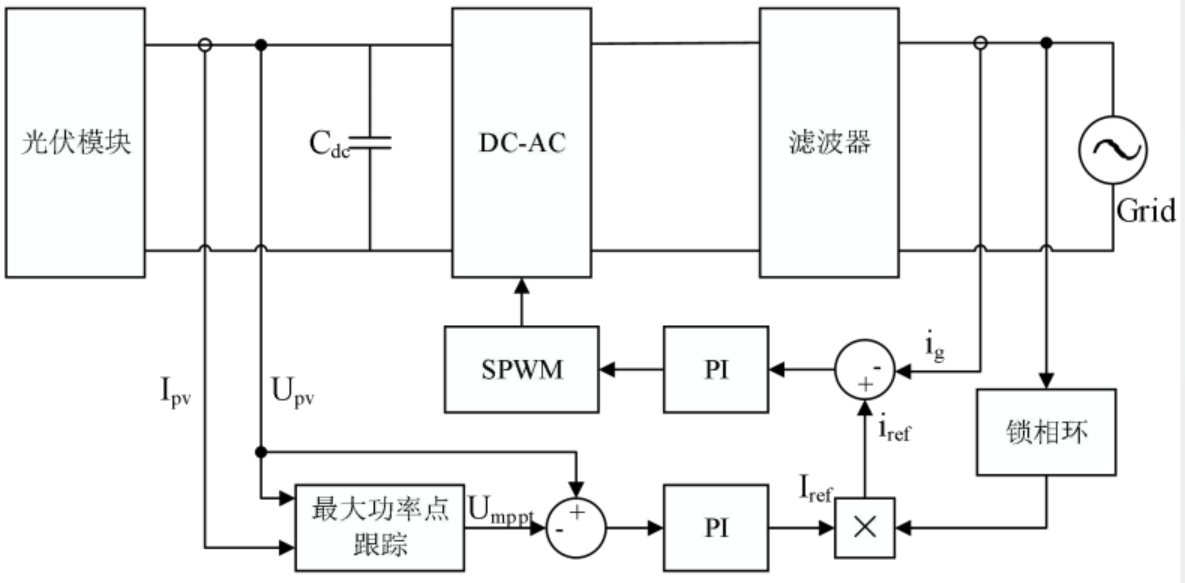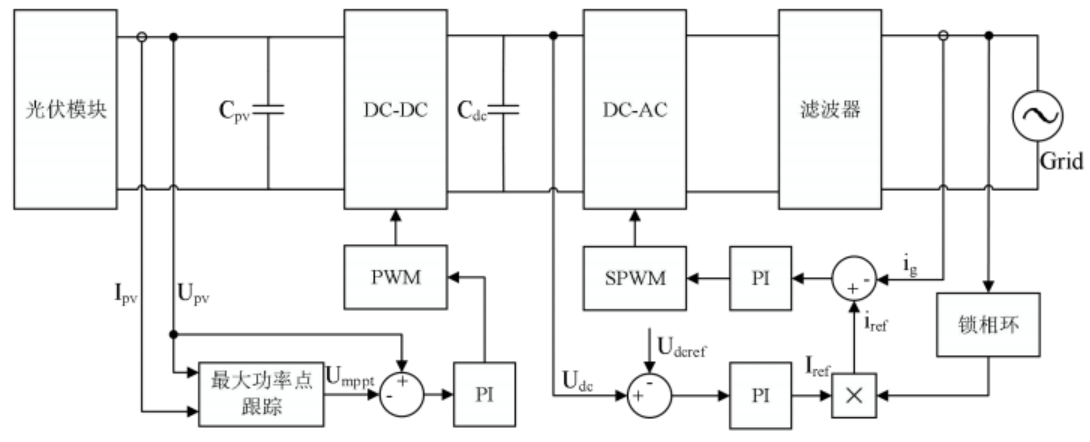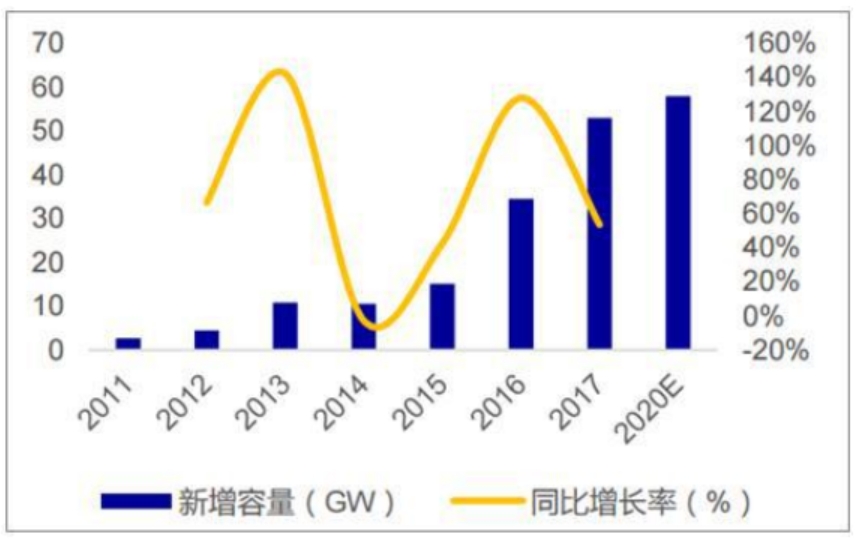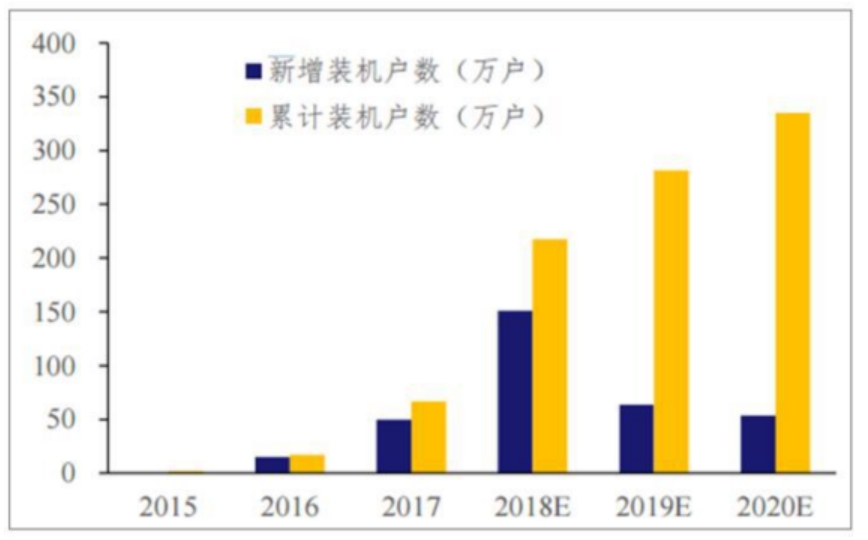In the current oil and coal crisis and environmental protection requirements, the development of the new energy industry has become an important issue that urgently needs to be addressed internationally, in the context of the shortage of traditional energy resources and ecological pollution. Solar energy belongs to a type of renewable energy, which has advantages such as clean and pollution-free, safe and reliable, low failure rate, large storage capacity, and long duration. These are all beyond the reach of traditional power generation and other power generation methods. The origin of the photovoltaic industry comes from the photovoltaic effect, which refers to the phenomenon where light causes a potential difference between uneven semiconductors or different parts of semiconductors and metals. In short, it is the conversion of light energy into electricity through a certain material (solar cell).
Fossil fuels still dominate the current electricity market, followed closely by wind and nuclear power generation. From a development perspective, photovoltaic power generation will be introduced into the domestic and international markets in the form of distributed power sources, gradually replacing some traditional energy sources; In the short term, photovoltaic power generation can fill the gap in traditional energy, meet the electricity needs of special fields and remote areas without grid coverage, and have important significance in maintaining the natural environment and adjusting energy strategies. Even though photovoltaic technology has been developed and the production cost of power generation components has gradually decreased, the current cost of photovoltaic power generation is still high, making it impossible for residents to use the grid at an affordable price. Therefore, the photovoltaic industry still inevitably relies on national financial subsidies, which has become an important factor hindering the development of the photovoltaic industry. Overall, the proportion of photovoltaic power generation to global power generation is still relatively small.
At present, humanity is facing enormous challenges in achieving economic growth and sustainable social development. Under the dual constraints of resource scarcity and environmental protection requirements, how to develop the economy has attracted widespread global attention. Photovoltaic power generation, with its unique advantages, has been increasingly valued internationally in recent years. In 2017, the National Energy Administration of China established the first batch of 55 smart energy demonstration projects and issued documents such as the “Trial Measures for Promoting the Construction of Grid connected Microgrids”; The National Science Foundation of the United States strongly supports the FREEDM project and establishes a special research center; The Home Energy Management System (HEMS) researched in Japan is the fundamental unit of the future energy internet; The German Ministry of Environment and the Ministry of Economy and Technology have specifically implemented six demonstration projects, including E-Engery. The installed capacity of photovoltaic power generation in various countries around the world in 2017 is shown in Table 1. The photovoltaic industry is gradually developing steadily and will ultimately take on a significant role in the future energy structure transfer process.
| China | United States | EU | Global | |
| Installed capacity of solar power generation | 130,632 | 41,131 | 106,573 | 385,674 |
In 2017, the global installed capacity of new photovoltaic systems was approximately 100GW, and it is predicted that by 2020, the global installed capacity of new photovoltaic systems will reach 140-150GW. 2017 was the first year of photovoltaic development in China, with a newly added installed capacity of 53GW. Both the newly added and cumulative installed capacity of photovoltaics greatly exceeded industry expectations. The installed capacity and growth trend of photovoltaics are shown in Figure 1-3.
On June 1, 2018, the National Development and Reform Commission, the Ministry of Finance, and the Energy Administration jointly issued a notice on matters related to photovoltaic power generation in 2018, indicating that the development of the photovoltaic industry is moving towards maturity. China has formulated a long-term development plan for photovoltaic power generation, and relevant government departments have increased their efforts to promote solar energy. They have formulated strategic policies and actively supported them to reduce the burden of national pillar power generation methods. The proportion of renewable energy usage has been increasing year by year, and the proportion of photovoltaic power generation has skyrocketed.
As the core of photovoltaic power generation systems, solar inverters have always been the focus of competition in related industries. Domestic solar inverters were basically successfully developed and put into production in 2009. Currently, global authoritative research institutions GTM Research and HIS have successively released the latest global solar inverter shipment list, with Huawei, Sungrow Power and SMA ranking in the top three. Huawei has been ranked first for three consecutive years, with its market share continuously increasing, The main reason is that while Huawei’s solar inverters have broken the record for shipment volume in the Chinese market, their market share in Asia Pacific, Europe, Africa and other regions has also rapidly expanded. At the same time, the list also reflects another major change in the solar inverter market – technological route iteration. The shipment volume of string solar inverters has exceeded that of centralized solar inverters for the first time, accounting for 54.9%, and the ranking precisely proves that string solar inverters have gradually become the mainstream inverter technology for large ground power plants. Figure 4 shows a string solar inverter.

The traditional centralized photovoltaic power generation system first connects solar panels in series and then in parallel to form a photovoltaic array and generate direct current. At the same time, in order to improve the power generation efficiency of the solar inverter, the maximum power point tracking of the photovoltaic array is carried out, and then the direct current is converted into alternating current through a unified solar inverter to supply power to the load. However, with the continuous evolution of photovoltaic power generation technology, people have gradually discovered the drawbacks of centralized solar inverters, such as low energy utilization and poor stability, and more and more string solar inverters are used in small and medium-sized power plants.
The main research focuses on string photovoltaic power generation systems, which combine a certain number of solar panels to form a photovoltaic module (1kW-5kW), and track the maximum power point of each module. Finally, direct current is connected in parallel through the solar inverters of each module at the AC end to supply power to the load. Compared to traditional centralized photovoltaic power generation systems, string solar power generation systems have the advantage of: when a single string solar inverter fails, the modules will not affect each other, and the entire power generation system can still work normally. However, when the centralized solar inverter fails, it will cause the entire power generation system to collapse, resulting in resource waste; In addition, considering the differences in performance and occlusion of each solar panel, the maximum power point of each panel is also different, and the solar inverter can only achieve local optimization. In this case, the string solar inverter has multiple maximum power point tracking channels due to the small number of solar panels in the module, which makes it more efficient and generates more electricity compared to centralized solar inverters.
Series solar inverters are becoming increasingly popular in ground power plants due to their advantages such as high power generation, low maintenance costs, good adaptability to the environment, and fine management granularity. Meanwhile, the rapid rise of China’s distributed photovoltaic, photovoltaic poverty alleviation, and household markets continues to benefit the string solar inverter industry.
1. Single stage and two-stage
Series solar inverters can be divided into single-stage and two-stage types according to the power conversion stages. The former refers to the process of simultaneously achieving boost, maximum power point tracking, and inverter in a single-stage circuit; The latter refers to the process of implementing boost and maximum power point tracking in the front-end circuit, and the process of implementing inverter in the back-end circuit.
The structural diagram of a single-stage solar inverter is shown in Figure 5. Its characteristics are high efficiency, low cost, and simple structure, but due to the need to simultaneously achieve boost, maximum power point tracking, and inverter in a single-stage circuit, it leads to complex control methods.

The structural diagram of a two-stage solar inverter is shown in Figure 6. Its structure is to add a front-end DC converter on the basis of a single stage, usually using a Boost converter or Buck Boost converter to achieve boost and maximum power point tracking. The latter stage circuit usually uses a four switch inverter bridge. To achieve inverter grid connection and stable DC bus voltage. From this, it can be seen that its characteristic is hierarchical control, which greatly reduces the difficulty but also reduces efficiency. At the same time, the increase in the number of components also leads to an increase in cost.

2. Isolation type and non isolation type
Series solar inverters can usually be divided into isolated and non isolated types based on whether they include isolation transformers. Isolation types can be further divided into power frequency isolation type and high-frequency isolation type based on transformer type.
Power frequency isolated solar inverters usually install power frequency transformers between the output side and the power grid to achieve electrical isolation. The suitable frequency of the transformer is consistent with the frequency of the power grid in various countries, and the voltage level range is 200V-800V. Its characteristics are simple topology structure and control strategy, good safety and impact resistance performance, relatively mature technology, but large volume and high cost; High frequency isolated solar inverters usually install high-frequency transformers between AC and DC converters to achieve electrical isolation. The voltage level range is 175V-560V, which is characterized by small size, light weight, and high conversion efficiency of about 93%. However, the topology and control strategy are cumbersome, and the impact resistance performance is poor.
| Common mode leakage current value (mA) | Disconnect time (s) |
| 30 | 0.3 |
| 60 | 0.15 |
| 100 | 0.04 |
Non isolated solar inverters can effectively avoid the shortcomings of large volume, high cost, and low efficiency caused by isolated transformers, with a voltage range of 150V-450V. However, due to the lack of isolation transformers, there is an electrical connection between the solar cell and the grid, resulting in parasitic capacitance between the solar panel and the ground, which is an important factor causing common mode leakage current. The size of parasitic capacitance is closely related to the shape, temperature and humidity of the solar panel, as well as the installation environment, typically ranging from 50-150nF/kW. Excessive common mode leakage current can cause electromagnetic interference, increase the harmonic component of grid connected current, cause system losses, and seriously endanger personal safety. German standards such as VDE-0126-1-1 have clear requirements that when the effective value of common mode leakage current reaches the upper limit, the solar inverter must be cut off from the grid within the specified time, as shown in Table 2.
3. Grid connected and off grid types
Cluster solar inverters can usually be divided into grid connected and off grid types based on whether they are connected to the national public power grid.
The output voltage of grid connected solar inverters is clamped by the grid, so a current control method is adopted to make the output current of solar inverters at the same frequency and phase as the grid, and integrated into the grid. At the same time, grid connected solar inverters should also have functions such as island detection, and the control strategy is relatively complex; Off grid solar inverters are usually connected to loads or batteries, using voltage control methods to directly supply power to loads or store excess electricity without being connected to the grid, and are therefore commonly used in remote areas.
Research and design of non isolated two-stage series solar grid connected inverters. Firstly, the topology and working principle of the front-end interleaved parallel Boost converter are studied, while modeling and simulating the solar panel and the variable step conductance increment method to achieve maximum power point tracking; Secondly, the topology and working principle of the H6 inverter bridge in the later stage are studied, and the current quasi proportional resonance control is also studied and simulated; Finally, design the hardware circuit of the non isolated two-stage series solar grid connected inverter, calculate and select relevant component parameters, write software programs, and build an experimental platform for the non isolated two-stage series v grid connected inverter. The main content is as follows:
1) Introduce the research background and significance of the project, the international status of photovoltaic power generation, and the rise of string solar inverters, and provide a detailed explanation of the advantages and classifications of string solar inverters.
2) Select the interleaved parallel Boost converter as the front-end circuit of the non isolated two-stage series solar grid connected inverter and conduct in-depth research, and verify it by building a simulation model; Derive and simulate the mathematical model of solar cells under ideal conditions to illustrate the principle of MPPT; Compare and summarize various MPPT control methods, and design a variable step conductance increment method, which is verified by building a simulation model.
3) Select H6 inverter bridge as the post stage circuit of non isolated two-stage series solar grid connected inverter and conduct in-depth research, and verify it by building a simulation model; Explain the principle of current control technology; Compare and summarize various current control methods, and design quasi proportional resonance control, which is verified by building a simulation model.
4) Select TMS320F28335 as the control chip for the non isolated two-stage series solar grid connected inverter, and study and design its overall structure and main parameters; Design and introduce the main circuit and some peripheral circuits of the system, and perform parameter calculation and selection of relevant components; Research and implement SPWM and digital phase-locked loop technology through control chips.
5) Build an experimental platform using existing laboratory conditions and equipment to validate the theoretical analysis and design research in the first four chapters; Test the main data and signal waveform of the solar inverter prototype through the upper computer and relevant testing instruments; The experiment shows that the output current of the solar inverter prototype is in the same frequency and phase as the grid voltage, and the total harmonic of the current meets the grid connection requirements. The conversion efficiency and power are also relatively ideal.



